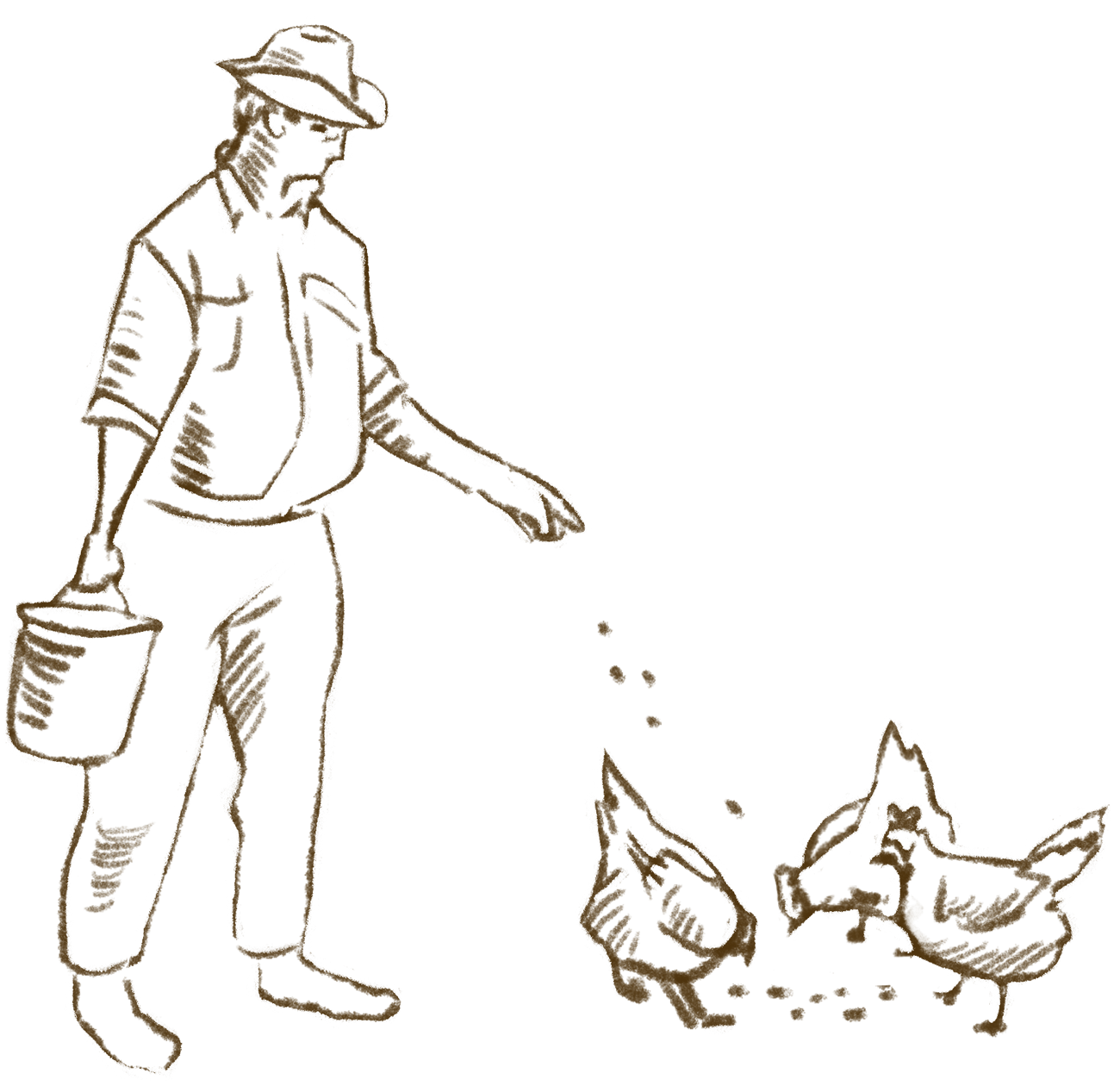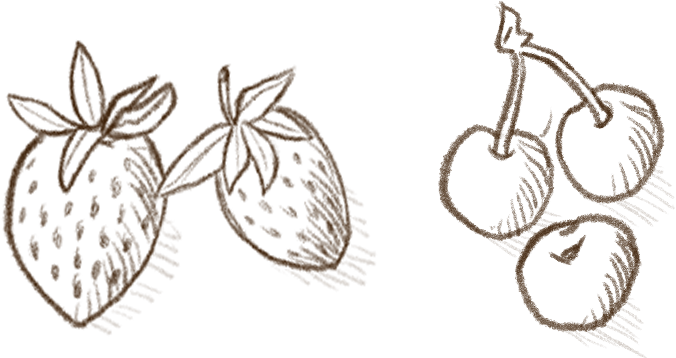PART I
Who Grows
Your Food?

By: Leonina Arismendi Zarkovic
PART I
Who Grows
Your Food?
By: Leonina Arismendi Zarkovic

This is part one of a series providing both historical and modern framework of what ‘farm labor’ really is in America to help us properly begin telling the stories of Who these Farmworkers Are… Because they are so much more than just ‘those who grow our food’ and they are worth much more than what they bring to the economy and the services that they are capable of providing for us.

History of Farm Work as Immigrant Labor
The last month of the year was one of the most heartbreaking of 2021– For just a few moments, the headlines read: Shocking! Modern Day Slavery! as news surfaced of Operation Blooming Onion yielding the arrest of 24 people responsible for two deaths in the state of Georgia. Through the forced labor of almost 200 human beings, they collectively made and laundered over $200 million dollars. Terms like farmworkers, immigrants, the undocumented, forced labor and slavery became interchangeable, or at least synonymous.
The heartbreaking part of this story is not just that these human beings lived in bondage every day, forced at gunpoint to dig out onions with their bare hands for twenty cents per bucket. The real travesty comes when one begins to analyze the desperate conditions at home that lead to migration. Oftentimes, we find that the culprit for mass migration to the USA is actually the USA’s own military industrial complex and MultiNational corporations interest’s abroad working together to exacerbate worsening conditions for thousands (if not millions) of people in the Global South through war tactics rooted in colonization and capitalism.
We must also consider that the majority of people oftentimes referred to as ‘immigrants’ or worse, ‘illegal’ ‘aliens’ are in fact the Descendants of First Nations People actively illegalized on Stolen Land, suffering an on-going modern day version of the genocidal tactics used against their Ancestors to gain control of their Lands, resources, labor, time and bodies long ago.
“Historically, the term to describe the colonized and oppressed people that suffered to support and sustain the United States food system has changed many times however the essence remains. Native American and African slaves were the original farmworkers in the United States.”
– Yesenia Cuello

1600s–
Indentured servants from England brought to the U.S.
1650s-1800s–
Post Mexican-American War – Indigenous People from Mexico continued to seasonally migrate ancestral routes.
1860s-1870s–
Reconstruction Era – Laws passed to prohibit slavery and involuntary servitude.
1865-1866–
Post Civil War – Black Codes created to limit the rights of Black People, they needed permits to travel, work in anything other than the agricultural sector and were prohibited from growing their own crops.

1860s-1930s–
Farming Industrialization – Demand for Chinese and Filipino labor increases post reconstruction as large scale farming grew.
1921–
First U.S. Guest Worker Program from Mexico ends.
1929-1939–
Mexican Repatriation Act – More than half a million Mexican-Americans deported.
1942-1945–
Executive Order 9066 – 110,000 Japanese and other Asian Americans were forced into isolated internment camps during WWII. Over 2,000 Italian Americans were placed in Arizona concentration camps.
1943–
British West Indies Program – Florida Sugar cane growers obtain permission to hire Caribbean workers to cut sugar cane on temporary visas and seasonal guest programs. Notorious for the ill treatment of workers.
1954–
Operation Wetback – Racist propaganda and political efforts against Mexican workers resulted in millions of violent, militarized detention and deportation practices.

1964–
Bracero program ends.

–1650s-1800s
African People brought to the U.S. as slave labor.
–1798
Alien and Seditions Acts – Four acts created to allow the president to detain non-citizens, determine which immigrants are enemies of the state, made it harder for people to become citizens and allowed persecution of dissenting parties in the colonies.
–1882
Chinese Exclusion Act Passed – Considered the first immigration law in the U.S.
–1890s-1900s
Jim Crow Era – Economic and social violence of aparthaid. Laws passed in the South to further marginalize Black Farmers.
–1914-1918
World War I – As European migration declined, increased demand for Mexican labor arose the need for the U.S. first guest worker program.
–1930s
As Filipino workers begin to mobilize, Mexican workers were brought in to farm. Great Depression & The Dust Bowl – White farmers begin to sell their farms and become migrant agricultural workers.
–1933
National Industrial Recovery Act – Labor laws and worker protection acts passed yet it excluded farm and domestic workers from basic labor protections such as overtime pay, workers’ comp, ability to unionize and child labor laws.

–1942-1964
World War II – Bracero Program is passed to bring people from Mexico to work in the fields and on railroads. Notorious for the ill treatment of workers.
–1952
Immigration and Nationality Act passed solidifying temporary work visa programs.
–1962
National Farm Workers Association founded.
–1970s-2022
Escaping U.S. backed violence at home, Latin American immigrants begin working the fields, eventually becoming 92% of all farmworkers in the U.S. Over 75% of farmworkers today are undocumented. Seasonal guest workers provide 3% of the agricultural work in the U.S. and are equally at high risk of being exploited as Operation Blooming Onion 2021 shows us.
1600s–
Indentured servants from England brought to the U.S.
1650s-1800s–
African People brought to the U.S. as slave labor.
1650s-1800s–
Post Mexican-American War – Indigenous People from Mexico continued to seasonally migrate ancestral routes.
1798–
Alien and Seditions Acts – Four acts created to allow the president to detain non-citizens, determine which immigrants are enemies of the state, made it harder for people to become citizens and allowed persecution of dissenting parties in the colonies.

1865-1866–
Post Civil War – Black Codes created to limit the rights of Black People, they needed permits to travel, work in anything other than the agricultural sector and were prohibited from growing their own crops.
1860s-1870s-
Reconstruction Era – Laws passed to prohibit slavery and involuntary servitude.
1860s-1930s–
Farming Industrialization – Demand for Chinese and Filipino labor increases post reconstruction as large scale farming grew.
1882–
Chinese Exclusion Act Passed – Considered the first immigration law in the U.S.
1890s-1900s–
Jim Crow Era – Economic and social violence of aparthaid. Laws passed in the South to further marginalize Black Farmers.
1914-1918–
World War I – As European migration declined, increased demand for Mexican labor arose the need for the U.S. first guest worker program.

1921–
First U.S. Guest Worker Program from Mexico ends.
1929-1939–
Mexican Repatriation Act – More than half a million Mexican-Americans deported.
1930s–
As Filipino workers begin to mobilize, Mexican workers were brought in to farm. Great Depression & The Dust Bowl – White farmers begin to sell their farms and become migrant agricultural workers.
1933–
National Industrial Recovery Act – Labor laws and worker protection acts passed yet it excluded farm and domestic workers from basic labor protections such as overtime pay, workers’ comp, ability to unionize and child labor laws.
1942-1964–
World War II – Bracero Program is passed to bring people from Mexico to work in the fields and on railroads. Notorious for the ill treatment of workers.
1942-1945–
Executive Order 9066 – 110,000 Japanese and other Asian Americans were forced into isolated internment camps during WWII. Over 2,000 Italian Americans were placed in Arizona concentration camps.
1943–
British West Indies Program – Florida Sugar cane growers obtain permission to hire Caribbean workers to cut sugar cane on temporary visas and seasonal guest programs. Notorious for the ill treatment of workers.

1952–
Immigration and Nationality Act passed solidifying temporary work visa programs.
1954–
Operation Wetback – Racist propaganda and political efforts against Mexican workers resulted in millions of violent, militarized detention and deportation practices.
1962–
National Farm Workers Association founded.
1964–
Bracero program ends.
1970s-2022–
Escaping U.S. backed violence at home, Latin American immigrants begin working the fields, eventually becoming 92% of all farmworkers in the U.S. Over 75% of farmworkers today are undocumented. Seasonal guest workers provide 3% of the agricultural work in the U.S. and are equally at high risk of being exploited as Operation Blooming Onion 2021 shows us.


Decolonizing history begs us to note how the Land was stolen.
The nation’s narrative says that First Nations and settlers had an honorable battle for the Land and First Nations came out losing. Historically this is not the case, both Native and settler accounts painfully detail the horrific genocidal violence that settlers inflicted on Indigenous communities. From burning down entire cities, their crops and harvests, to driving Indigenous People to inhospitable parts of the country and damn near wiping out entire species of animals who First Nations considered sacred food sources. Settlers did not just focus on vile, sadistic killings, experimentations of war tactics and enslavement, they also focused on literally burning down the Land and everyone connected to it in order to disrupt the relationship Natives had between their Lands, Nature, People, food and medicine for generations to come.
Decolonizing the present requires us to understand these tactics are not far from what is happening in modern times. From bananas to cocaine, many of America’s faves are easily obtained today thanks to the collaboration between US intelligence agencies and the military, corrupt right winged LatAm governments and old slavery money in the form of re-branded multinational, mutimillion dollar corporations with powerful lobbying teams.
The USAs first and second immigration laws were all about exclusion and they have evolved very little since. The practice of putting Indigenous people in reservations and enslaved people into plantations morphed into imprisoning Immigrants in ICE concentration camps and the for- profit prison industrial complex.
The dehumanization and othering of immigrants through racist laws and caste systems has gone on for generations, it reduces people and their needs for peace and security to become a transactional matter. Never did we see this as clearly as when Trump was in office when headlines from well meaning parties can be summed up with the idea that without immigrants….
…who will grow our food, mow our lawns, cook our meals?

The complexities within the relationship between the Land who gets to own it, control it, profit from it versus who gets to work it to merely survive through servitude require further reading than I can provide here, but gaining a historical and current framework of what ‘farm labor’ really is in America helps us properly begin telling the stories of Who these Farmworkers are… They are so much more than just ‘those who grow our food’ and they are worth much more than what they bring to the economy and the services they are capable of providing.
Before colonization and capitalism, the People of this Land lived in harmony with nature and one another. Traditionally, when it came to food and the people that kept their community fed, hunters, gatherers, planters, cooks and medicine people were beloved, revered… sacred.
It is a privilege to bring you these stories, to show you the people behind your plate.
It is my hope that you will see the beauty I see in my people and that you gain a deeper understanding of the issues agricultural workers, especially undocumented migrant workers face, and share my resolve to fight our food systems. Because they are harmful to the environment, to our health and to our siblings working to be sure that we eat fresh food today and everyday.

This piece was written by Leonina Arismendi Zarkoviç, a member of our Circle of Creatives. Leonina is an Uruguayan born Queer artist, translator and human rights advocate. They are recognized as a top-writer in Intersectional Feminism on Medium where they are known for their distinctive writing voice. As Reverend Leo they co-lead Iglesia del Pueblo, an online interfaith gathering space for Latinx movement leaders within the Poor People’s Campaign: A National Call for Moral Revival. Their work focuses on liberation theology, decolonization, womanism, food justice and popular education.
Their background is in urban farming, Ancestral growing and living practices, cooking, art and curation and have formerly owned an art gallery in Virginia.
Leonina’s work exists at the intersection of food justice, art, activism, faith and education. They are known for being very blunt, mostly driven by the urgent nature of the causes they advocate for.
